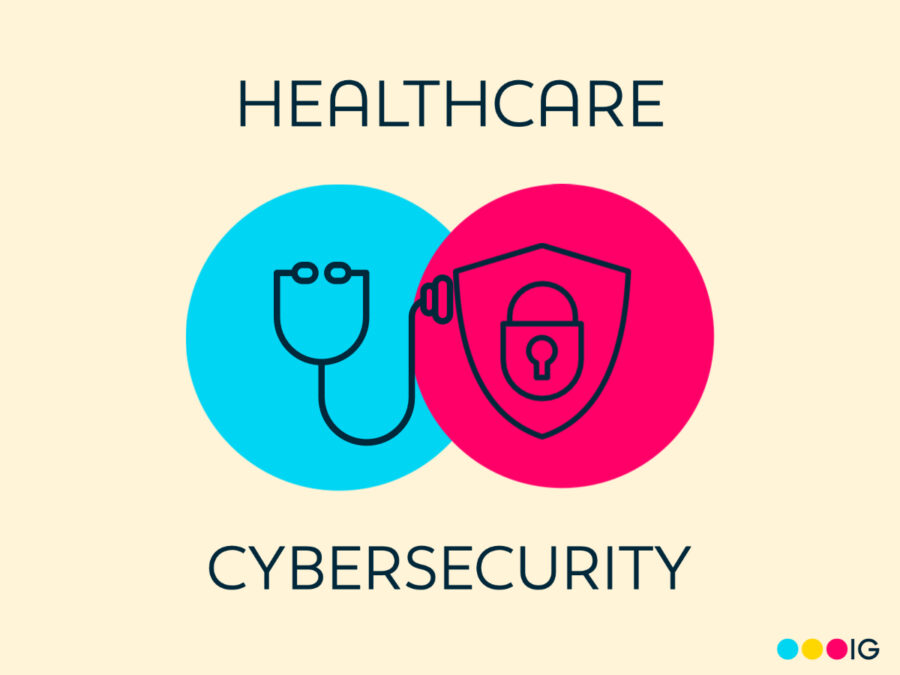In today’s digital age, cybersecurity in healthcare is of utmost importance. With electronic medical records and other sensitive information being stored online, healthcare organizations need to ensure that they have the necessary security measures in place to protect patient data.
Cyber attacks can not only compromise patient privacy, but they can also disrupt critical or life-saving healthcare services.
This post will dissect some of the most pressing cybersecurity challenges facing the healthcare industry today. Plus, we’ll offer a few tips for navigating the evolving world of Healthcare Information Technology (IT) in a way that is safe and secure for both patients and providers.
Most Common Attacks in Healthcare IT
Online threats can compromise patient privacy, sensitive information, and even the performance of life-critical technology. From identity theft to interruption of treatment, cyber attacks can deeply affect the lives of patients and healthcare staff.
But before diving into the main cybersecurity challenges within the healthcare industry, let’s review six of the most common attacks and what they mean.
Phishing: When a hacker impersonates a trustworthy email source, it is considered a phishing attack. A phishing email convinces the recipient to click a link that appears innocent but allows hackers to obtain sensitive personal information like credit card numbers and passwords.
Malware: This is software designed to infiltrate and damage a computer, network, or connected system. Different types of malware include:, spyware, adware, viruses, or a Trojan horse (malware disguised as something harmless.) Malware caused 26% of all healthcare cybersecurity breaches last year.
Ransomware: This is a specific type of malware that uses encryption to block access systems until the victim pays the hacker a ransom.
Theft of Patient Data: Many attackers will target patient data, stealing it so they can impersonate the patient and attempt to receive reimbursement for healthcare services or to file a fraudulent insurance claim.
Insider Threats: These types of threats can be willing or accidental. They occur when someone with access to the system or network puts other users (and their sensitive data) at risk. This typically happens with employees, former employees, or vendors.
Hacked IoT Devices: Internet of Things (IoT) devices can connect wirelessly to a network and are used to transmit data. In the healthcare industry, there are a lot of vital data-transmitting IoT devices being used. So, when these are hacked, it’s a major threat to sensitive information like patient billing details or private health records.
Healthcare Cybersecurity Challenges
As healthcare leans on IT at an increasing rate, providers and their systems will have to work diligently to stay on top of emerging threats. While the landscape for cyber attacks is constantly evolving, the biggest challenges that healthcare systems face are:
- protecting patient privacy
- navigating outdated technology
- solving for and preventing internal misuse
Let’s take a deeper look.
Legacy Systems
The term legacy system refers to any technology or software that is old, outdated, or obsolete, but continues to be used.
Beyond being slow or outdated, legacy systems pose a serious security threat, and the persistence of legacy systems is rampant throughout the healthcare industry as just 9% of all healthcare systems have prioritized legacy system removal as part of their cybersecurity plan.
Legacy systems are a major threat, primarily because older technologies receive less manufacturer or provider support. It’s like when a device goes out of warranty, and you’re no longer eligible for free repairs. Or when a part is discontinued, and you can’t get the necessary replacement to have the machine back up and running.
When manufacturers or providers have rolled out newer generations of a system or software, the support for older generations is going to decline. And that support includes cybersecurity patches and upgrades that are necessary for keeping these systems secure.
To put it simply, compared to newer systems or software, legacy systems 1) are far more vulnerable and exposed to cyber threats and 2) receive far less support from their manufacturers.
Patient Privacy
If you’ve ever received medical treatment, you’ve likely been provided paperwork on the Health Insurance Portability and Accountability Act—more commonly known as HIPAA.
HIPAA is a major part of our healthcare system, and it provides a set of rules and guidelines for how, when, and with whom doctors can disclose patient information that is considered private or classified. Essentially, it protects your right to provider-patient confidentiality. And when information falls under these HIPAA regulations, it is referred to as Protected Health Information (PHI).
But with the rapid evolution of IT in the health sector, PHI may be at a higher risk. Safeguarding patient PHI has become a major challenge in healthcare cybersecurity, as many cyber attacks are geared toward mining this private information for reselling on the black market.
Internal Misuse
Last but not least, one of the most pressing cybersecurity challenges plaguing the healthcare industry is internal misuse. Verizon found that employees were at fault for 39% of healthcare system breaches—more than twice the amount in other industries.
Internal misuse, also referred to as insider threats, can be intentional or accidental. Intentional insider threats occur when someone with access—like an employee, former employee, or vendor—enables or instigates security breaches. This could include leaking passwords or financial details, selling patient data, or intentionally downloading malware, to name a few.
Accidental insider threats are typically the result of carelessness or negligence. It could be as simple as being unaware of security policies and ignoring healthcare cybersecurity training, or as extensive as leaving sensitive information in an unprotected area.
Accidental insider threats make up the majority of this form of cyber attack, with 61% being negligent users and only 14% of occurrences being malicious.
Tips for Bolstering Security
So, how can healthcare systems combat some of these issues? Well, the truth is that there isn’t a one-size-fits-all prescription as each healthcare system has its own unique set of security challenges. However, there a few steps every system can take to bolster cybersecurity:
- Cybersecurity training to teach internal users best practices, plus how to identify phishing attempts and other forms of attacks
- Integrating software updates to prevent as many systems as possible from becoming legacy systems
- Implementing cybersecurity software to cover patches in vulnerable or non-supported systems
- Strengthen system access controls and practice the Principle of Least Privilege (PoLP)
- Perform regular risk assessments to identify weak points in the network and to be aware of security gaps in legacy systems
- Hiring qualified staff cybersecurity healthcare staff
Protect Your Data, Protect Your Patients
By implementing robust cybersecurity protocols, healthcare organizations can safeguard against potential breaches, ensuring that patient information remains secure and life-critical technologies are intact.
With the right cybersecurity measures in place, patients can rest assured that their personal data is protected, and healthcare providers can focus on delivering quality care without worrying about the potential impact of a cyber attack.
If your teams are struggling with outdated systems, internal misuse, or any other security gaps—it may be time to bring on new talent. Fill out the form below to get started!
Looking for Cybersecurity Experts?
We know where to find them. Questions? Call us toll-free: 855-485-8853


 by Rie Parker
by Rie Parker




